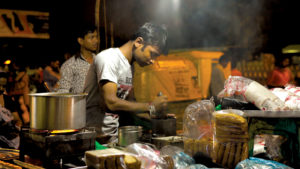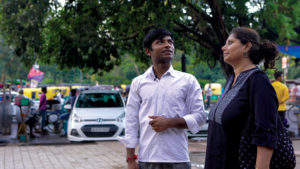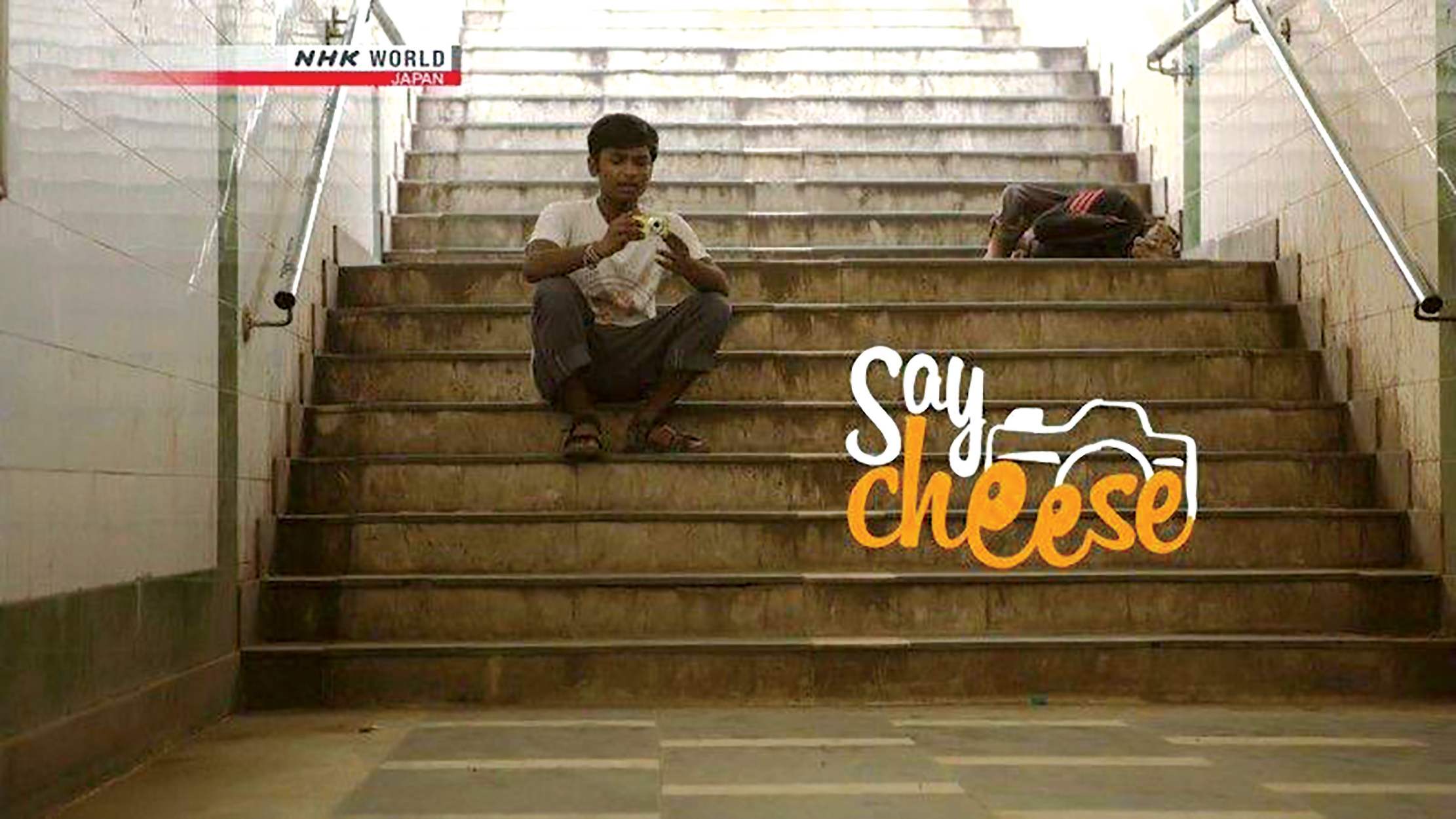The documentary, Say Cheese, captures life through the eyes of Sheru, a teenager who grew up on the Delhi streets
“Jab se maine aankein kholi thi, sadak pe hi tha main”
(From the time I have opened my eyes, I have been living in the streets)

The streets have always been home to 16-year-old Sheru. One among the countless children living in the streets of the capital, his struggle is like any other street child, doing odd jobs to make a living. Yet something about his happy-go-lucky positive attitude and his passion for photography makes him stand apart.
Sheru’s hopes and fears have been captured perfectly in the documentary Say Cheese, directed by filmmaker Ishani K Dutta. Working with street children, Ishani met Sheru at a workshop on filmmaking when he was nine years old. It was there for the first time that Sheru touched a camera and his love for photography has only grown ever since.
“I knew he was fascinated with the camera. After the workshop got over, he kept in touch with me and would call me up, asking about cameras,” says Ishani. Years later during one of her research works, she bumped into him again at Children’s Development Khazana (CDK), a bank run by street children for street children.
Set up by Butterfly, an NGO for children’s welfare, CDK also provides life skills to the children. Ishani learned that Sheru was getting formal education, along with training in music and camera. Intrigued by the program, Ishani decided to make a film on how the bank brought together several children and encouraged them to save their little earnings. “But one thing I was sure about was, the film had to be told through the eyes of Sheru,” says the director.
A filmmaker based in Delhi, Ishani has worked on several films that focuses on the city. Toxic Trail, explores the hazards of unorganised e-waste in Delhi. Womb on Rent, follows the life of a surrogate homemaker in south-west Delhi. Spread across Delhi, Say Cheese follows the lanes and bylanes of the capital.
The film begins with Sheru concentrating on his studies, completely unaffected by the regular ruckus at a night shelter in Old Delhi. Previously living on the streets near Red Fort with his family, he ran away when he was only seven. Physically abused by his mother, a sex worker, he left her and started working as a rag picker. He recalls picking up the language of the streets and quickly adapting himself to survive.
From selling water and popcorn at railway stations to working at a tea stall, Sheru takes up several small jobs to save money. For him, every penny brings him one step closer to his ultimate goal – buying a camera.
Showing off a small second-hand digital camera which he managed to buy from his savings, Sheru promises a big treat to his best friend Sumit once he becomes a photographer. Always engaging in playful banters with him, Sumit does not hesitate to lend him money, but it always comes with a healthy dose of nagging.

Sheru shares his love for photography with Sumit, who inadvertently becomes the subject for most of his photographs. Travelling across the city, majority of Sheru’s snaps are of smiling faces. “Camera is a powerful medium. It can make even the saddest person smile,” he says.
As he walks around Old Delhi, he points out to homeless people lying on the streets and promises to photograph them one day. Aspiring to become a street photographer he intends to draw attention to the endless problems of street dwellers.
One simply cannot miss the way Sheru’s face lights up when he holds a professional camera for the first time during the course of shooting. What is equally heart breaking is the disappointment on Sheru’s face when he learns about the hefty prices of these cameras. He looks around the store with a longing on his face and decides to come back some other time with a sigh.
Sheru has a lot more disappointment in store for him. On the occasion of Eid, he attempts to reconcile with his estranged mother, and even makes the effort of getting her a saree as a gift. Both anxious and excited, he sets out looking for his mother near GB Road, the largest red light area in Delhi. As he goes around the back lanes and underbelly of the capital, he learns that his mother has run away to avoid police raids.
According to Ishani this was the moment that moved her the most in the entire film. As Sheru sits down on the side walk looking all defeated, he eventually breaks down. “It took a toll on me and all my crew and we stopped shooting thereafter,” says Ishani. What stands out is that soon after he decides to move on and instead of grumbling, he expresses his gratefulness of still having a mother.“It was this positivity that made me feel that the story needs to be told.” Through the film Ishani attempts to show that there’s another side to life on the streets, one that is away from all the despair.
“All that these children need is guidance to follow their hopes and dreams,” she adds.
The film ends with a positive message : ‘Hope is life’. A story of perseverance, Sheru forces us to see the brighter side of life – he strongly believes that if others have manged to brave their situations, he can too. When Sheru gets behind the lens, it’s a little difficult to not grin from ear to ear, as he goes, “Say cheese!”





